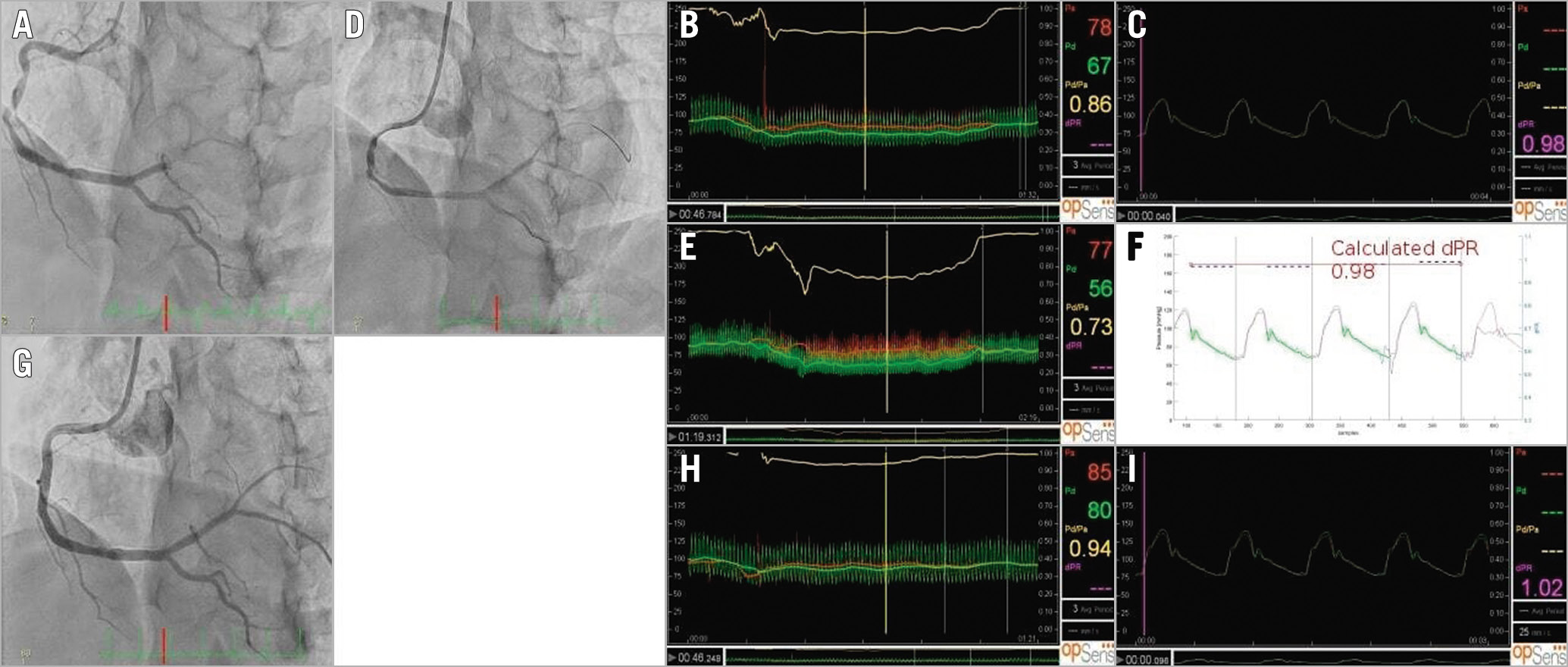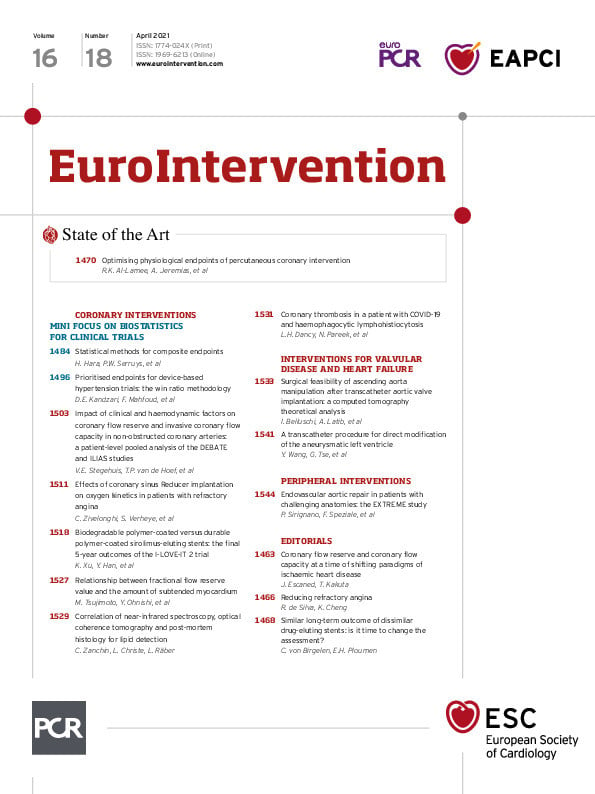

Figure 1. The transition of the physiological parameters throughout the procedure. Baseline coronary angiogram (A), fractional flow reserve (B), and diastolic pressure ratio (C). Post atrioventricular (AV) branch intervention coronary angiogram (D), fractional flow reserve (E), and diastolic pressure ratio (F). Final coronary angiogram (G), fractional flow reserve (H), and diastolic pressure ratio (I).
A 68-year-old man with exertional angina was admitted to our hospital. Coronary angiography revealed a moderate stenosis in the mid right coronary artery (RCA) and an occluded atrioventricular (AV) branch with Rentrop grade 2 collaterals providing retrograde flow from the posterior descending (PD) branch (Figure 1A). A pressure wire (OptoWire™; Opsense, Quebec, QC, Canada) was advanced to the PD branch. The fractional flow reserve (FFR) measurement was 0.86 and the diastolic pressure ratio (dPR) was 0.98 (Figure 1B, Figure 1C).
The occluded AV branch was crossed with a wire and stented (Figure 1D). The FFR measurement after stenting was 0.73 (Figure 1E), which indicated the presence of ischaemia caused by the mid RCA lesion. Therefore, the lesion was stented. The final FFR and dPR measurements were 0.94 and 1.02, respectively (Figure 1G-Figure 1I).
This is a representative case to show the relationship between the severity of the stenosis and the coronary flow velocity across the stenosis. The amount of subtended myocardium directly relates to the coronary flow demand1. This case also illustrates that the perfusion of a collateral-dependent territory is inferior to that of the same territory perfused by a patent artery. In addition, the dPR value calculated from resting Pd/Pa data after stenting of the AV branch was 0.98 (Figure 1F), which means that dPR could not detect the change of the subtended myocardium as sensitively as FFR.
Several reports have shown higher FFR in the collateral donor vessel after CTO lesion recanalisation2. In these cases, contrary to ours, after CTO recanalisation, the amount of blood supplied to the myocardium by the donor vessel was reduced and the haemodynamic significance of the stenosis in the donor vessel decreased.
These are illustrative cases of FFR dynamically reflecting the change in the amount of subtended myocardium due to stenosis.
Conflict of interest statement
The authors have no conflicts of interest to declare.
Supplementary data
To read the full content of this article, please download the PDF.

